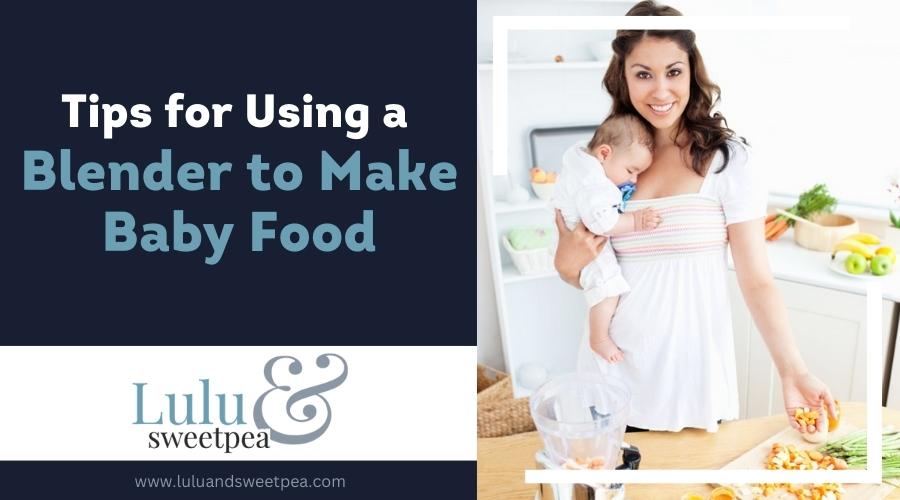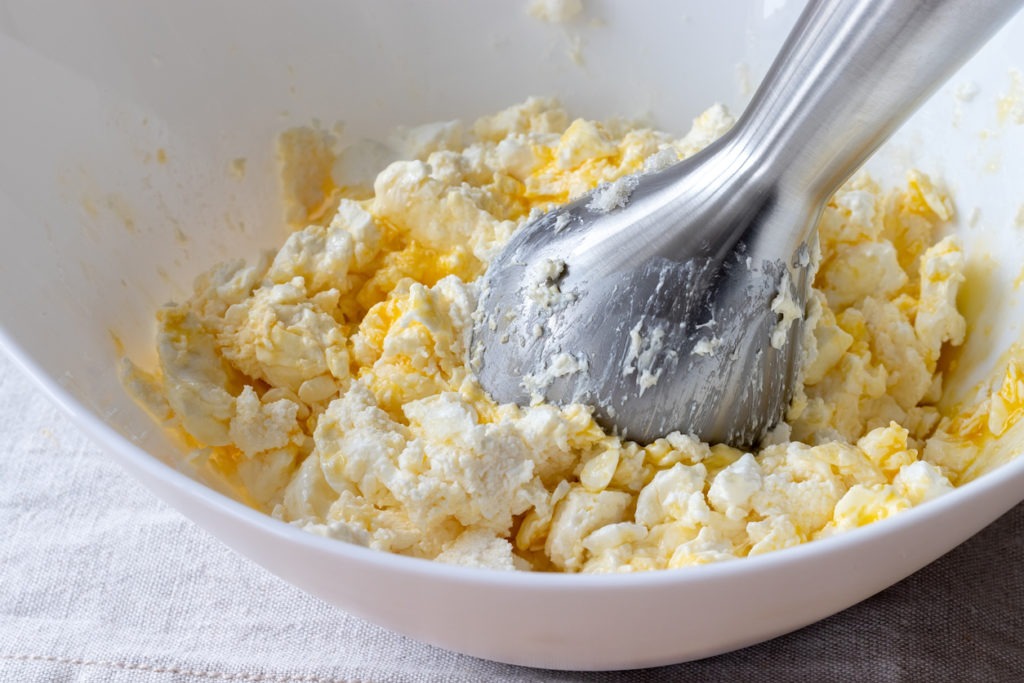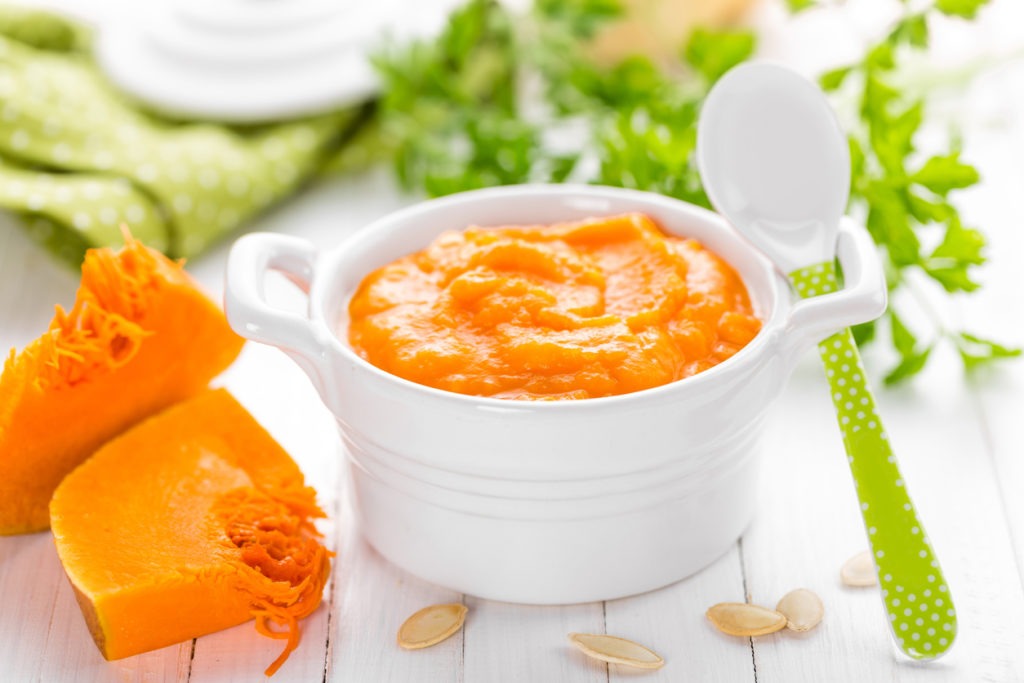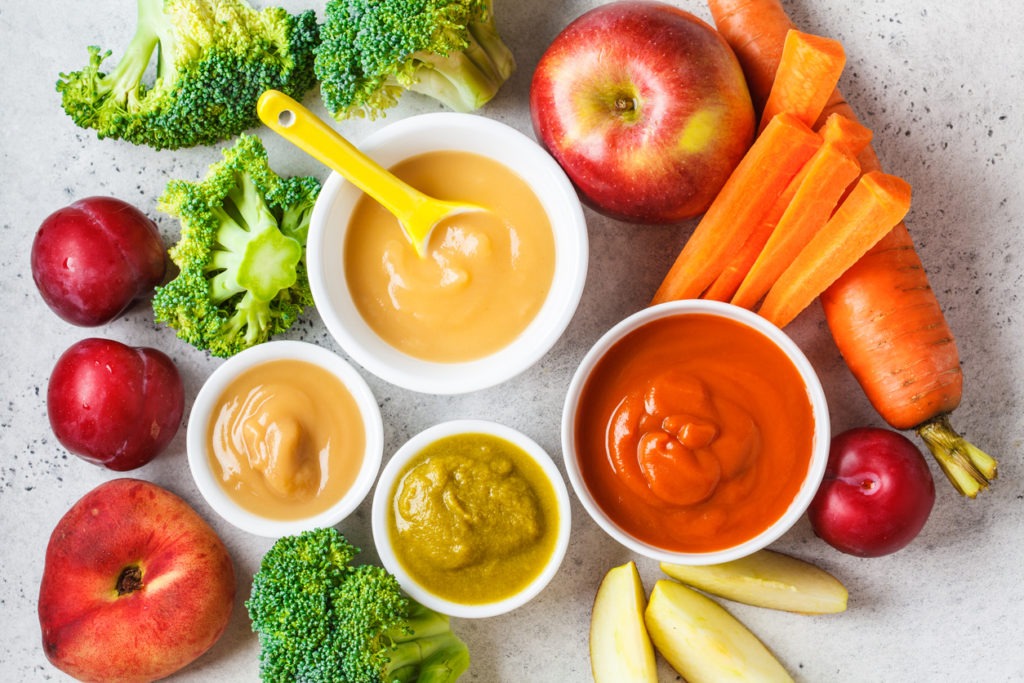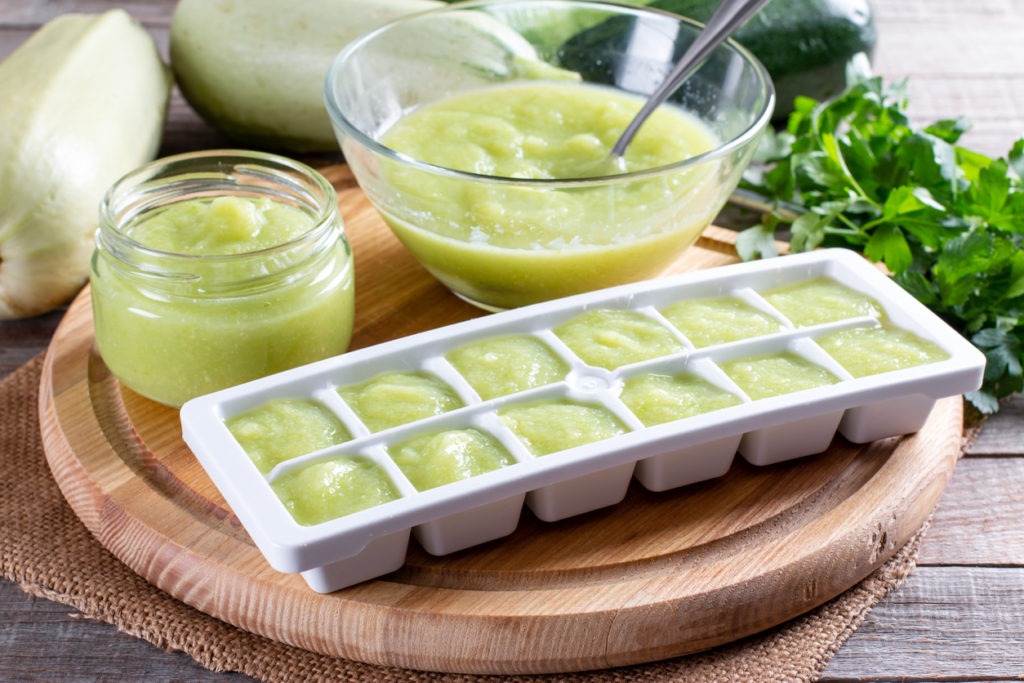Many parents complain that baby food is too costly, especially if they opt for organic goods. But it shouldn’t be the case. Yes, having and raising a baby is expensive in this time and age, but you can always find cost-effective ways to raise them. When it comes to baby food, you can prepare healthy, whole foods for your baby using tools and appliances already in your kitchen.
You can start feeding your baby healthy foods without breaking the bank by using your blender and making it at home. Since they still can’t chew, you can puree whole fruits or vegetables to make it easier for them to eat.
How to Use the Blender for Making Baby Food
Food processors are more commonly used to make baby foods, but if you don’t own one, there’s no need to buy one for this purpose. If you have a blender at home, you can use it to blend and puree solid foods for your baby.
1. Prepare your ingredients
When dealing with whole, natural foods, make sure you rinse them thoroughly before slicing or dicing them to prevent contamination. Remove the peel to ensure the food remains soft – you can keep the peels of foods like apples or cucumbers later when the baby is older.
2. Cook your ingredients
Soft fruits can be sliced and blended easily, but if you’re preparing vegetables, start by cooking them by steaming, baking, microwaving, or boiling. You can treat hard fruits like apples the same way. If you plan to puree only a little amount of food, microwaving them can be okay.
3. Take the vegetable or fruit to the blender
Take the cooked vegetable or fruit and place them into the blender. Set aside the liquid the food was cooked in – you can use it to make the puree. This way, you can also preserve any nutrients that may have leached into the water during cooking.
However, it’s best to avoid using reserved water from cooked carrots and other high-nitrate vegetables for babies under seven months old. Use clean, plain water or formula, or breast milk instead.
4. Blend
Set your blender to puree, and it will begin to mash the vegetables or fruits. If you have a blender with pre-programmed settings, choose “puree” or “liquefy.” While you are blending, you can add liquid to thin the puree. Adding the baby’s milk, whether it’s breast milk or formula milk, adds a little nutritional boost and a familiar taste for the baby. But pureeing without adding liquids is also good – some parents prefer to thin the food before serving.
A baby’s puree must be thin and watery initially because their tummies are gradually adjusting to solid foods after only receiving milk for the first few months. After a few weeks, you can transition to thicker purees without added liquids.
Tips for Using a Blender to Make Baby Food
Remember these tips so you can make the most out of blending and making baby food:
1. Invest in a high-quality blender
A good blender is strong enough to crush or liquefy hard fruits and vegetables without crashing. It also makes blending time shorter. As parents, your days are probably always busy, especially if you’re also working, so get a blender that is not powerful enough to do its job in seconds. A blender with substandard quality would give you substandard results. Also, if you choose a blender with a plastic jar, get one with BPA-free plastic, which you will most likely get with a good model. Before you buy, research and check out specs and reviews to ensure you’re getting the most bang for your buck.
2. Start with soft foods
Since your baby is just learning to chew and swallow, there is a risk of choking. So even if you plan to blend, starting with soft foods is always a good idea. For naturally hard foods, you may need to boil, steam, or cook them before putting them in the blender.
3. Prepare small batches for trial
Your homemade food will be new for your little one’s taste buds, so it may take time for your baby to adjust to it. It’s best to start with small batches while still figuring out the blend your baby likes. And when the baby doesn’t seem to like it the first time, you need to let them try it two to three times more to see whether they really like it or not.
If it turns out they like it, then and only then should you make a big batch. If you make a big batch at your initial try and your baby won’t eat it, it will just go to waste.
4. Use fresh
Since you’ll be using a blender to ensure you’re giving the baby a healthy meal, see to it that you prioritize fresh ingredients without additives. Whole foods that are packaged or bought in a jar often have added salt and preservatives already, so steer clear of them. It’s best to start with fruits and vegetables with milder flavors, like beans, carrots, cauliflower, sweet potato, pumpkin, apples, bananas, avocado, peach, or melon. You can try more flavorful foods like beets, blueberry, orange, spinach, or fennel when that goes well.
5 . Keep food preparation clean
Cleanliness and safety are essential for any food preparation, but if you’re preparing baby foods, make sure you’re being extra hygienic so as not to irritate their little tummies. All surfaces and tools used to prepare their food must be clean, like knives, chopping boards, bowls, blenders, and more. Make sure the sink and the kitchen countertop are clean as well. And always wash your hands thoroughly before handling any food or tools when preparing baby foods.
Whole foods come with natural “packaging,” so make sure you wash fruits and vegetables thoroughly before preparing them, even if you are going to peel them.
Besides dirty food, babies are also sensitive to undercooked food. Make sure that any meat, poultry, or eggs are thoroughly cooked.
6. Have a batch of frozen veggies ready
Frozen veggies can be a lifesaver when you need to whip up something quick for your baby and haven’t stocked on fresh produce yet. All you need is to steam these veggies and mash them in the blender so you can feed your hungry baby something healthy quickly!
7. Add liquids
For starters, baby food must be reasonably liquid in texture. Add water, formula, or breast milk as an ingredient to make your pureed baby food a little runny. Don’t use fruit juices because they contain more sugar; avoid adding salt and oily foods to avoid health problems.
8. Prepare in advance
Babies require constant attention, and on top of that, they can consume food faster than you often realize. And when they are hungry, they tend to cry for attention and are not yet patient enough to wait for mommy or daddy to finish preparing their food. Because of these reasons, it’s best to prepare baby food a day or two in advance in case your schedule gets too tight. The good news is making baby foods is simple, and you can keep them in the fridge for two days, so you have prepared food whenever your baby needs to eat.
Use small containers like glass jars to keep them fresh. All you need to do is grab one, reheat it, and you’re good to go.
9. Make sure the frozen baby foods are stored in freezer-safe materials
Do not freeze pureed, homemade baby food in glass that is not freezer-safe. Some people use old baby food jars for this purpose, but these things are not for freezing.
There are a number of baby feeding products you can buy specifically made for freezing homemade baby food, but for the basics, all you need is an ice cube tray and a roll of saran wrap. Do not use foil for covering the ice cube tray because shards of the foil may be left in the food cubes.
Once the puree cubes have been set and are frozen, you can take them out of the tray and transfer them to freezer bags. Make sure to label the bag with the date when you prepared the food and what type of food it is. The baby food cubes can last for a month when stored in the freezer.
If you’re just starting to introduce solids to your baby, you won’t really be able to determine if they like or dislike the food until much later. Freezing the pureed baby food allows you to go back and try a once-rejected food over again.
If you haven’t bought a blender yet, our Guide to Choosing the Right Blender for Your Needs might help you.
